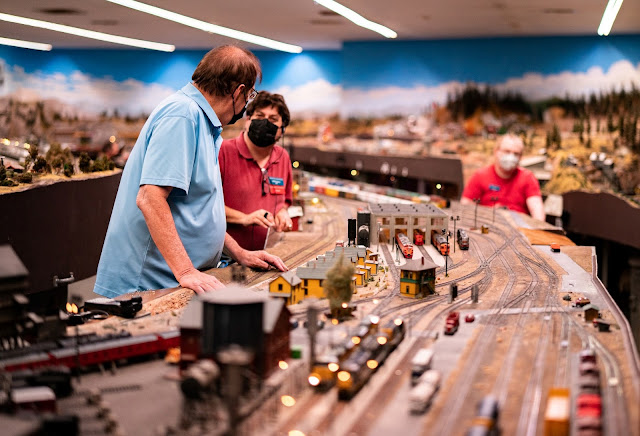9 Secret Habits of Neat and Organized People
Many of us get interested in minimalism because we feel overwhelmed by everything we own, everything we need to do, and everything we need to care for. That's why decluttering brings such peace and relief for most of us. With less to wrangle, we gain confidence that we can succeed at our responsibilities. Too much is simply too much.
But even when we own less, we might still find things getting out of control. Organization isn't a natural skill for everyone, and without it, the laws of nature take over. Like it or not, order is always temporary. Once-tidy rooms attract dust. Tasks and trash multiply. Things wear out, skin wrinkles, and hair turns gray or stops growing back. Unfortunately, we can't expect anything to stay the way we leave it.
The good news is that a few minor shifts in how you think and what you do on a daily basis can yield major positive results. Anyone can master these skills – even you!
9 low-effort, big-impact organizing habits
1. Avoid big black holes.
A large, open storage area is primed for a huge mess. Uncontained stuff expands to fill whatever room you give it, so a garage, attic, basement, or rented storage space will always fill up with items you have no immediate use for. And once that happens, stuff piles up until finding anything becomes a big chore (and you don't remember what's there anyway).
Containers are your fix. Add bins to a closet to separate the sheets for each bed, and never dig through a pile of different sizes again. Keep small pouches in a big handbag (or buy a bag with separate pockets), and never search for your pen, lipstick, hand cream, or keys in a jumble at the bottom. Put garden soils and fertilizers on one shelf and weed killers and pesticides on another, and you'll never wonder what you're running low on. Resist the temptation to add more just because you can make it fit.
2. Say no to spillover.
Too many stuffed animals for their bin? Too many spices for the rack? Some of those items are no longer loved or used. Instead of getting a bigger container or starting to fill another one, remove the extras you don't need.
In fact, organized people will (surprisingly) choose less storage, not more. Remember that clutter expands to fill as much space as you'll allow (see #1). Once you add one thing you don't need or use, other items will inevitably join it. With less storage, you either resist clutter or live surrounded by piles. You know what an organized person is going to choose.
3. Hang more items.
When you hang garden tools or sports equipment on a pegboard, brooms and mops on a wall organizer, and backpacks on heavy-duty pegs, you have everything within easy reach plus a clear floor. Not only does the space look neater and more spacious, but it's easier to sweep or vacuum.
4. Store things by usage.
For example, first aid items are in a kit together near the bathroom; extra blankets are in a closet near the bedrooms. In the pantry, pastas and sauces are grouped together, pancake mix is with syrup, nut butters with jams. A pet station with leash, waste pickup bags, and flashlight is near the back door. Nail files, clippers, buffers, polish, and remover are in a box together near your preferred manicure area. This makes it so much easier to grab just what you need and to put it away again.
If you find yourself storing items in unusual places, such as extra serving platters under the guestroom bed or bags of snacks in a cupboard in the laundry room, consider the fact that you may simply have too much stuff. There are two reasons it might be stored in a hard-to-access spot:
- The storage area that makes more sense is full of other clutter.
- The weirdly-stored items are actually clutter that needs to be purged.
5. Use behavioral hooks.
A hook is a behavior that leads directly to another desired behavior. It's a simple association you can teach yourself in order to make a useful habit permanent, like the way your mom taught you that using the toilet was a hook for flushing it, which was a hook for washing your hands. So as you rinse your coffee cup with one hand, use your other hand to open the dishwasher and pull out the rack so the cup winds up there rather than stacked in the sink.
6. Obey the Golden Rule of a tidy house.
What's the rule? When you're done with something, put it away. If you create a place for everything to live in your house, and you put it all away when you're done, you make it almost impossible for clutter to reaccumulate.
7. Spend one minute now to save hours later.
You can't control clutter if you keep procrastinating on small jobs. My dad used to say, "If it only takes a minute, do it now." So hang up that towel, brush the mud off your shoes, wipe the sticky countertop, deal with the mail, and put your clean clothes away.
When you take a bit of time now, you save yourself the big headache of 20 unfinished jobs that will take an entire afternoon to sort out and deal with later.
8. Don't over-organize.
Believe it or not, you can be too organized. A bespoke farmhouse pantry and a luxury closet system may look gorgeous on Pinterest or in your favorite lifestyle magazine. But do you want to spend all your time organizing, or do you want a life that's made simpler and easier because you're organized?
You could systematize your housework, catalog your paperwork, add labels to your linen closet, arrange your kitchen utensils, and reconfigure your garage to hold more stuff. But true minimalism means that many of those systems are unnecessary.
- I don't need a fancy shoe rack because I own four pairs of shoes.
- I don't need a filing cabinet because all of my paperwork fits in a portable file box.*
- I have a (paper) calendar, but most of my weekly schedule is in my head because it's not that complicated.
- I don't need a makeup tray because I use four products when I want to be dressy, and just tinted lip balm the rest of the time.
If you remove what you don't need, you'll find that you don't have so much to organize. You probably don't need a bunch of fancy storage solutions – you just need less stuff.
* This blog is reader-supported. If you buy through my links, I may earn a small commission.
9. Don't worry about missing what you purge.
When you realize that decluttering is a practical decision, not an emotional one, it becomes much easier to let go. Having an organized, clean, easy-to-maintain home is more satisfying than having a bunch of "maybe I'll need this someday" or "but that was Grandma's" things. It's easier to choose and use what you really need and care about, and happily let go of everything else.
In it for the long haul
Now that these secret habits are not so secret, you'll be able to master them for long-term decluttering success. Order may be temporary, but you can enjoy peace and confidence every day.
Never fear! A beautiful, spacious, uncluttered home may seem like an impossible dream, but it doesn't have to be.
My book, Decluttering: The Simple Guide from A to Z (first in my Minimalist Basics series), breaks the decluttering process into manageable tasks, making it easier to achieve the larger, cleaner, more organized home you're longing for. It's the cheat sheet you've needed to keep you on track.







Comments
Post a Comment